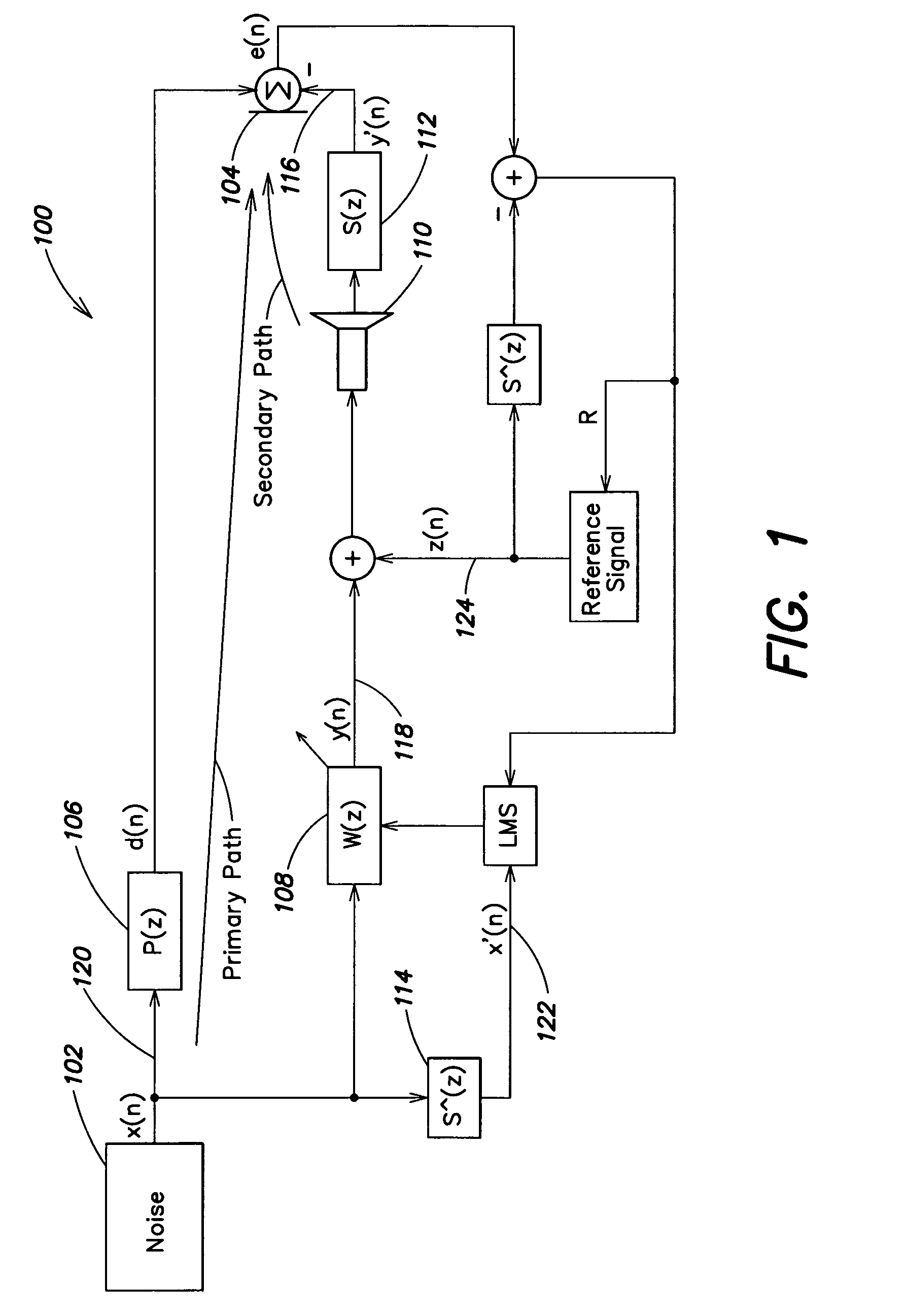Active noise control system
a noise control and active technology, applied in the field of active noise control, can solve the problems of destructive interference, noise signal emission cannot be reduced to the desired degree, interference with the audio quality of a useful signal, etc., and achieve the effect of reducing or cancelling unwanted noise signals and achieving the level of reduction
- Summary
- Abstract
- Description
- Claims
- Application Information
AI Technical Summary
Benefits of technology
Problems solved by technology
Method used
Image
Examples
Embodiment Construction
[0033]A feedforward control system is usually applied if a signal correlated with the unwanted noise to be reduced is used to drive the active noise control actuator (e.g., a loudspeaker in this case). In contrast, if the system response is measured and looped back, a feedback process is usually applied. Feedforward systems typically exhibit greater effectiveness in suppressing or reducing noise than feedback systems, particularly due to their ability of broadband reduction of noise. This is because feedforward systems enable noise to be prevented by initiating counteractions against evolving noises by evaluating the development of the noise signal. Feedback systems wait for the effects of noise to first become apparent before taking action. Active noise control does not take place until the sensor determines the noise effect. The advantage of feedback systems is that they can also operate effectively even if there is no signal correlated with the noise that can be used for control ...
PUM
 Login to View More
Login to View More Abstract
Description
Claims
Application Information
 Login to View More
Login to View More - R&D
- Intellectual Property
- Life Sciences
- Materials
- Tech Scout
- Unparalleled Data Quality
- Higher Quality Content
- 60% Fewer Hallucinations
Browse by: Latest US Patents, China's latest patents, Technical Efficacy Thesaurus, Application Domain, Technology Topic, Popular Technical Reports.
© 2025 PatSnap. All rights reserved.Legal|Privacy policy|Modern Slavery Act Transparency Statement|Sitemap|About US| Contact US: help@patsnap.com



